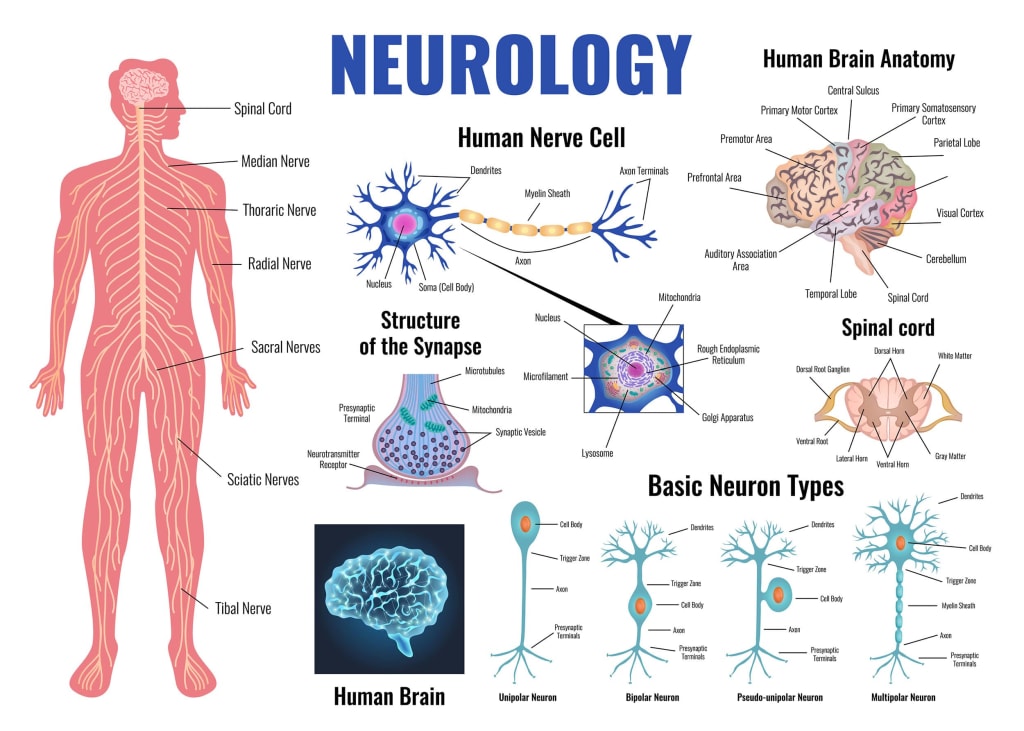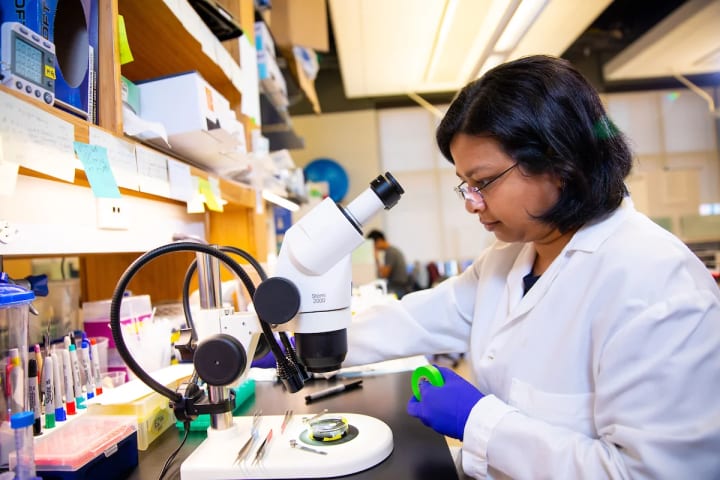Types of Research in Neurobiology - An Overview
Neurobiology at the tissue level consists of neurons, glial cells, and the extracellular matrix.

What is Neurobiology?
Neurobiology, as a formal scientific field, focuses on extensively examining the human nervous system and its various functions. Both neuroscience and physiology have gained considerable advantages from the on-going research and advancements made in the realm of neurobiology. The all-inclusive nervous system in vertebrates encompasses the central nervous system comprising the human brain, retina, spinal cord and the peripheral nervous system.
How Does Neurobiology Function?
Neurobiology at the tissue level consists of neurons, glial cells, and the extracellular matrix. Neurons are responsible for processing information in the nervous system. Glial cells play a vital role by providing nourishment, protection, and structural support to the neurons. The extracellular matrix in the brain offers molecular support to both neurons and glial cells. Astrocytes, a specific type of glial cell, have been the focus of intensive research. Together with the extracellular matrix, these cells make up the nerves and different areas of the brain. Neuroscience research organization, such as International Institute of Innovation & Technology Kolkata, investigates the interactions between these components.
How is Behavior affected by Neurobiology?
Different parts of the brain impact various aspects of behavior and the study of neurobiology aims to comprehend these behaviors, and their connection to specific regions of the brain. Scientific research in neuroscience has revealed that the frontal lobe plays a role in personality, emotions, judgment, problem-solving, abstract thinking, attention, and planning.
The parietal lobe and occipital lobe are also involved in interpreting different information.
Neurotransmitters play a crucial role in either exciting, inhibiting, or modulating neurons. Most neurobiological disorders stem from fluctuations in neurotransmitter levels. These disorders can result from disorders in the transmission or reception of neurotransmitters. Fluctuations in neurotransmitter levels can occur due to either overproduction or underproduction of these chemicals, as well as damage to the neurons themselves.
EEG and Neurobiology
Electroencephalography (EEG) is utilized by neurobiology research teams in public health institution to examine the firing patterns of neurons and other brain activities. It is acknowledged as a significant clinical tool in comprehending the connections between brain functions and behavior. Researchers heavily rely on EEG for non-invasive investigations of the brain, thus enabling the assessment of cognitive, perceptual, and motor functions related to information processing.
Types of Neurobiology Research

Behavioral neurobiology:
Behavioral neurobiology is an interdisciplinary field within behavioral neuroscience. It is also known as biological psychology, biopsychology, psychobiology, or neuroethology. Scientists specializing in this area investigate how the central nervous system converts biologically significant stimuli into natural behavioural patterns.
Developmental neurobiology:
Developmental neurobiology is a distinct branch of neuroscience that focuses on investigating the mechanisms involved in the development and functioning of the brain. The study commences with the transformation of a limited number of specialized embryonic cells into a complex nervous system. Within this field, experts explore the transformation and migration of cells as they assume their respective roles in the nervous system, ultimately leading to the establishment of a fully functional nervous system.
Molecular neurobiology:
Molecular neurobiology, or Molecular Neuroscience, is a specialized sector within neuroscience that focuses on investigating neuroanatomy on a molecular scale and comprehending the mechanical operations of molecular signalling within the nervous system. Scientists within this domain also explore the influence of genetics on the growth of neurons, alongside delving into the molecular foundation for neuroplasticity and neurodegenerative ailments. It is worth noting that this field is relatively recent and constantly evolving.
Neurobiology of addiction:
Researchers who are involved the field of neurobiology of addiction focus on investigating the involvement of neural circuits and the molecular biology of specific addiction targets within the brain. Additionally, they utilize human brain imaging studies to gain insight into the significant alterations occurring in these regions that contribute to the development of addiction.
Neurobiology of autism:
The realm of autism neurobiology centers on comprehending the multitude of elements correlated to the origination of autism spectrum disorder (ASD). Experts in this specialized sector of neuroscience delve into genetic factors, the growth of the brain, and the intricate involvement of diverse neural networks. Furthermore, scientists delve into the relationship between the composition of distinct brain regions and the appearance of ASD.
Neurobiology of psychiatric disorders
The study of how the brain and nervous system relate to psychiatric disorders is a distinct area within the domain of neuroscience. Scientists engaged in this field aim to grasp the functions of chemical messengers in the context of mental illnesses. The comprehension of this branch of science is influenced by the study of genes at a molecular level. An obstacle researchers in this discipline face are locating suitable participants who are not currently undergoing treatment with psychotropic medications, which impedes a complete understanding of the subject.
Conclusion
Public health institution plays a significant impact on neurobiology research as it actively supports the well-being of the brain, prevents neurological disorders, offers valuable information and insights, shares knowledge, and encourages collaboration. By addressing factors at a societal level that affect neurological health, public health initiatives will be able to create an atmosphere that propels our comprehension of the brain forward and enhances outcomes for those affected by neurological disorders. The collaboration and interaction between public health institution and neurobiology research organization such as the International Institute of Innovation & Technology Kolkata present an exciting opportunity for creating successful interventions and treatments, thus ultimately resulting in improved brain health outcomes for communities across the globe.
About the Creator
I3TK
International Institute of Innovation and Technology (I3TK) is based in New Town, Kolkata in the State of West Bengal, India. For more details, visit: https://i3tk.org/
Enjoyed the story? Support the Creator.
Subscribe for free to receive all their stories in your feed. You could also pledge your support or give them a one-off tip, letting them know you appreciate their work.






Comments
There are no comments for this story
Be the first to respond and start the conversation.